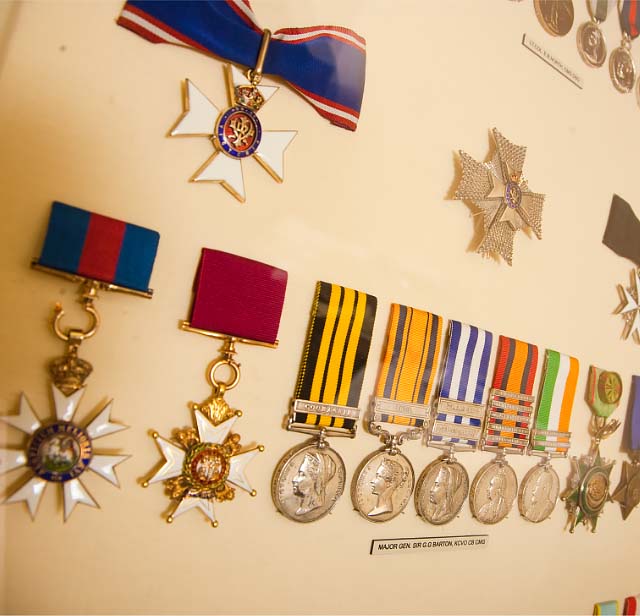The Fusilier Museum
The Fusilier Museum London tells the story of the Royal Fusiliers from 1685 to 1968 and of the Royal Regiment of Fusiliers from 1968 onwards.
The Royal Fusilier Museum is housed in the Regimental Headquarters, at the Regiment's historic home, HM Tower of London. Refurbished in 2011, the museum uses the fascinating personal experiences of individual Officers and Soldiers and its rich archive of war diaries and personal letters to introduce over 300 years of history.
From the outside, the Royal Fusiliers Museum may not look like much, but the building itself actually has a fascinating history. It started life in 1845 as officers’ quarters, built especially to house the Fusiliers. The ground floor – where the museum is now located – was built to include a smoking room, a reading room and even a ladies room, where officers would be allowed to entertain female guests, but only until 8pm! While the building has held the Royal Regiment of Fusiliers’ Regimental Headquarters for a long time, the Royal Fusilier museum itself opened in 1962.
A tour of the Royal Fusilier Museum starts with an explanation of where the name Fusiliers came from – a glass cabinet shows an amazing example of a fusil-style gun, a type of light musket used by the first fusiliers, and the source of their name.
The Fusilier museum then winds around through the hallways and rooms of the converted officers’ quarters to proudly display some relics from the Royal Fusiliers earliest campaigns. You’ll learn a huge amount about the history of the regiment and its origins, as well as learning about the life and achievements of its soldiers. Many of these stories are truly tragic, while others are tales of incredible bravery.
See the evolution and history of the weapons, equipment and uniforms of the Royal Fusiliers as the regiment marches through the centuries. Everything from sabres and muskets through to riot armour and gas masks are on display across a number of rooms.
Among the many fascinating relics of the regiment is the huge, ornate silver wine cooler, which was gifted to the Royal Fusiliers by King William IV, who had a special relationship with the regiment. This is one of the many honours that has been given to the regiment over the years, but it’s certainly among the most impressive to look at.
The Royal Fusiliers have had a huge impact on British military history, and their amazing insights into a number of infamous battles given by their soldiers, such as the Charge of the Light Brigade.
Over the centuries the Royal Fusiliers have fought from Denmark and Spain to India and South Africa. The helmets, weapons, personal items and seized trophies from many of their most famous engagements are on display within the museum, many of which give a fascinating insight into both life in the military at the time, and life in general throughout history.
This relatively little-known museum provides a series interesting and inspiring looks into this famous regiment, as well as providing a little context for some of the things you’ll learn about in the White Tower during your visit to the Tower of London.
The Royal Fusiliers are a famous regiment in a famous army, and the Royal Fusiliers Museum provides a great insight into the life and times of its soldiers throughout history, as well as a glimpse into the history of some of the most infamous wars and battles over the last several hundred years.
The museum is sited within the Tower of London grounds, admission is free with a Tower of London ticket.

